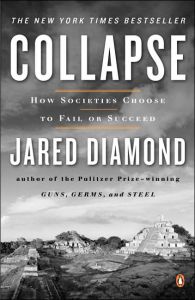Rejoignez getAbstract pour lire le résumé !

Rejoignez getAbstract pour lire le résumé !
Jared Diamond
Collapse
How Societies Choose to Fail or Succeed
Penguin, 2005
Aperçu
Prosperity one century, cannibalism the next. National societal failure comes quickly.
Recommendation
In this fascinating, surprising study, Pulitzer Prize winner Jared Diamond examines how and why some societies fail while others thrive. Diamond makes this history of failed societies into a page-turner, while resisting the urge to oversimplify. He unflinchingly examines cannibalism and mass murder in the hellish downfalls of Easter Island and Rwanda. Yet, he also outlines hope-inspiring successes in New Guinea, Japan and the Dominican Republic. This fat tome is quite engrossing, though in spots Diamond shows an academic’s weakness for repetition and caveats. Even so, this compelling classic deservedly has spent a long time on the bestseller lists. getAbstract recommends it to anyone who hopes to understand how human societies have gone wrong – and right.
Summary
About the Author
Jared Diamond teaches geography at UCLA. His previous book, Guns, Germs, and Steel, won the Pulitzer Prize. He also has won the National Medal of Science and many other awards, and has written more than 200 articles for Discover, Nature and other magazines.























Comment on this summary